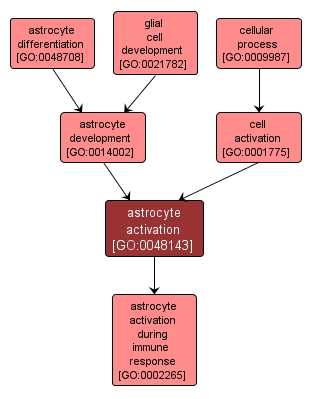GO TERM SUMMARY
|
| Name: |
astrocyte activation |
| Acc: |
GO:0048143 |
| Aspect: |
Biological Process |
| Desc: |
A change in morphology and behavior of an astrocyte resulting from exposure to a cytokine, chemokine, cellular ligand, or soluble factor. |
|

|
INTERACTIVE GO GRAPH
|














